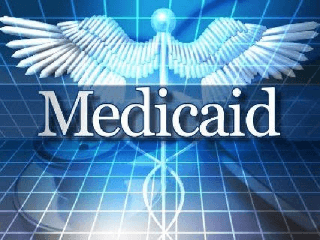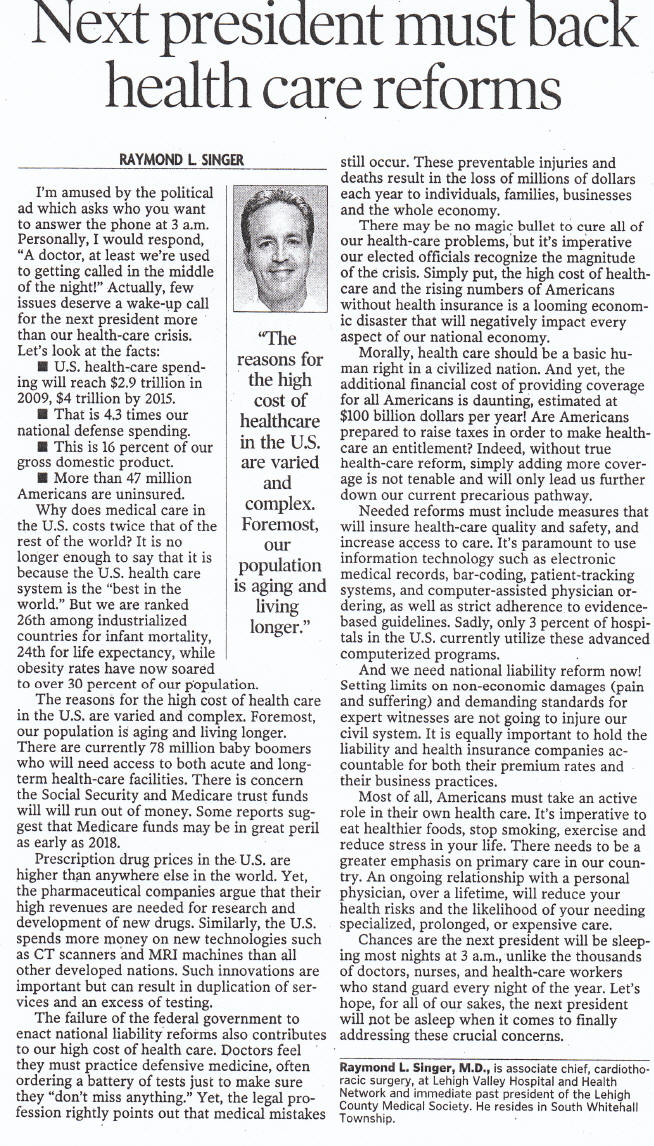Explaining the Supreme Court Ruling on the Patient Protection and Affordable Care Act – Often Referred to as “Obamacare”
The above video is a PCN Television broadcast of an event that I hosted at Muhlenberg College on November 14, 2013 entitled “The Future of Medicine: What You Need to Know about Healthcare Reform.” PCN generously provided me with written permission to post the telecast of the program on my website. I wish to acknowledge PCN TV for their support of community education.
The Patient Protection and Affordable Care Act (PPACA) was signed into law by President Obama on March 23, 2010. As a federal statute, it represents the most significant regulatory overhaul of the U.S. healthcare system since the passage of Medicare and Medicaid in 1965.

Obama signing the Patient Protection and Affordable Care Act on March 23, 2010.
The second picture is of the Supreme Court.
The Patient Protection and Affordable Care Act (PPACA) has three goals:
- Improve access to affordable health care for all Americans.
- Improve the quality and delivery of care.
- Curb the growth of healthcare costs.
Some of the provisions became effective right away, while others will occur in the years to come, such as the mandate that all Americans purchase health insurance or incur a tax penalty in 2014.
It was this mandate that was the key flashpoint that led to the law being challenged in the Supreme Court.
Another controversial aspect included the requirement that States expand Medicaid to cover all non-elderly low income persons below 138% of the federal poverty level.
Twenty-six states sued to have the law struck down as a violation of the Constitution’s Commerce Clause, which gives the Federal Government the power to regulate commerce between the states. Specifically, the challengers argued that the Federal Government overstepped its powers by ordering people to buy health insurance.
On June 28, 2012, by a 5-4 margin, the court ruled that the challengers were correct that the law could NOT be upheld under the Commerce Clause. But wait! Doesn’t that mean the law should have been struck down?
In a controversial ruling, Chief Justice Roberts joined 4 other Supreme Court Judges in saying that the law’s mandate to carry health insurance or pay a penalty was valid under Congress’s constitutional authority to levy taxes.
In other words, Americans are free to choose not to purchase insurance, but equally, the Government has the right to levy a tax to influence conduct, just like the taxing of cigarettes to discourage smoking.
Indeed, the penalty looks like a tax in many respects in that it is far less than the price of health insurance and it is collected by the IRS under normal means of taxation.
Therefore the Court reasoned that the mandate does not make the failure to buy health insurance unlawful. Beyond the payment to the IRS, the court explains, “neither the Act nor any other law attaches negative legal consequences to not buying health insurance.”
What was the Decision on Medicaid Expansion?
While the Supreme Court ruled that the PPACA mandate was constitutional, it found separately that the law’s provision to force States to expand Medicaid to all non-elderly low income persons with household incomes below 138% of the federal poverty level was unconstitutional.
The law would have given the Government the authority to penalize States that may have chosen not to participate in this expansion by taking away their existing Medicaid funding.
The Court called this “economic dragooning” that leaves States with no option but to accept the expansion.
The Court had speculated in earlier cases that the “financial inducement offered by Congress” was so coercive that “pressure turns into compulsion” —simply put, that brandishing federal funding to coerce States to participate in federal programs threatens the States’ independent sovereignty.
Having found the Medicaid expansion unconstitutional, however, the Court did NOT strike the expansion from the law, but simply prevented the Government from enforcing the expansion as a mandate.
The States still have the option to expand Medicaid under the PPACA law.
How will the States Respond to Medicaid Expansion?
A number of Republican governors have announced that they will refuse to expand their Medicaid programs. In reality, this is unlikely to happen.
On average, Medicaid accounts for more than 20% of most States’ budgets and represents their largest single source of funding.
Moreover, the expansion is accompanied by 100% federal funding for the first 3 years and then decreases to 90% by 2020.
A failure to opt for the Medicaid expansion would only increase the amount of uncompensated care and leave more citizens and underserved communities at risk.
Based on a recent New England Journal of Medicine article, “Mortality and Access to Care among Adults after State Medicaid Expansions,” there is evidence that overall, the changes in Medicaid will reduce mortality rates and save, rather than cost, money. (NEJM July 25, 2012)
Finally, residents in States that don’t expand will still be paying federal taxes to cover the expansion in States that do expand —despite the rhetoric, expect States to expand!
What Doctors, Nurses, and Patients Should Know
Most doctors and nurses will admit that they have not read the PPACA and are equally confused by the lengthy and complex legislation. Needless to say, if doctors and nurses are confused by the health care reform bill, most patients will be as well.
There are good resources on the Internet to learn more about the PPACA and its impact on physicians, nurses, and hospitals.
One of the best resources comes from the Harry J. Kaiser Family Foundation “Health Reform Source” at the following web site: http://healthreform.kff.org/
One bit of history, before President Obama was elected, I wrote the following editorial on April 20, 2008 –before President Obama had even won the Democratic nomination! Indeed, I referenced a commercial on TV that Primary Candidate Hilary Clinton used against Primary Candidate Barack Obama! Interestingly, President Bill Clinton has recently been critical of President Obama’s handling of the roll out of his healthcare reform measures… interesting since most experts believe that Hilary Clinton is expected to run for President in 2016.




